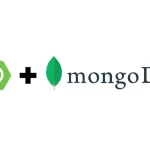A Historical Perspective
The landscape of software development has evolved dramatically over the years, with innovations continually simplifying and streamlining the process. Among the most transformative developments in recent decades are Low Code and No Code software solutions. These platforms have revolutionized the way applications are created, opening the door to a wider range of individuals and organizations to participate in software development. In this essay, we will explore the history, current state, benefits, and future prospects of Low Code and No Code software solutions.
The history of Low Code and No Code software solutions can be traced back to the early days of software development when developers sought ways to make the process more accessible and efficient. In the 1970s, the concept of visual programming languages emerged, allowing users to create software by manipulating graphical elements rather than writing lines of code. While rudimentary, these early visual programming languages laid the foundation for more intuitive software development tools.
The 1980s witnessed the rise of Rapid Application Development (RAD) methodologies and tools. These approaches aimed to accelerate software development through iterative and visual techniques. Tools like Borland Delphi and Microsoft Visual Basic became popular choices for building Windows applications. This era marked a significant step toward simplifying the software development process.
The early 2000s marked the emergence of Low Code platforms. These platforms sought to simplify application development by providing pre-built components and visual development interfaces. They were primarily aimed at addressing business process automation and basic application needs. Low Code platforms of this era were limited in scope but showed the potential to streamline development.
As the mid-2000s arrived, Low Code platforms expanded their capabilities to encompass a broader range of applications, including web and mobile development. They offered more extensive integrations and improved user experiences. This shift democratized the development process further, allowing organizations to build a variety of applications more efficiently.



Current Trends
The 2010s brought a significant shift with the emergence of No Code platforms. These platforms went beyond Low Code by enabling individuals with no coding experience to create applications. No Code platforms typically focused on simpler applications and automations, making them accessible to a wider audience. This era saw the development of tools like Zapier, allowing users to create custom automations without writing a single line of code.
Towards the end of the 2010s, the line between Low Code and No Code became increasingly blurred as platforms aimed to cater to a broader spectrum of users. Many integrated both Low Code and No Code capabilities, offering flexibility in application development. This convergence marked a pivotal moment in the evolution of these solutions.
As we enter the 2020s, Low Code and No Code solutions have seen rapid adoption across various industries. The COVID-19 pandemic further accelerated this trend, as businesses sought agile solutions for remote work, digital transformation, and automation. Major tech companies like Microsoft, Salesforce, and Google have invested heavily in these platforms, and numerous startups have entered the space.
The benefits of Low Code and No Code solutions are significant. They accelerate development, reduce costs, and democratize the development process. With Low Code, developers can create applications faster, leveraging pre-built components and visual interfaces. No Code platforms empower non-technical individuals to participate in application creation, fostering innovation across industries. These solutions are scalable, cost-effective, and enable organizations to respond quickly to changing market demands.
Rapid application development is about putting the power to develop applications in the hands of end-users, not just programmers.
- Xyopst
Benefits for Businesses
- Rapidly create applications, reducing time-to-market
- Lower development costs and maintenance expenses
- Enable non-technical users to participate in development.
- Quickly adapt to changing requirements and market conditions.
- Foster collaboration between business and IT teams, improving project outcomes.
- By admin2308





